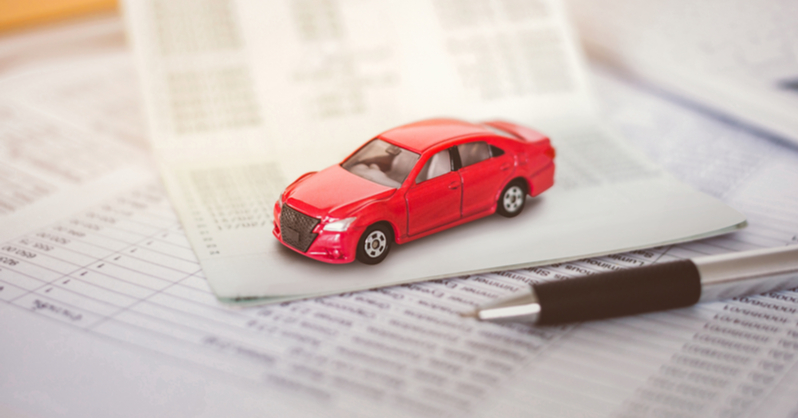If you have road warriors among your clients, they should be deducting automobile expenses as business expenses. Yet tracking these expenses for clients and deducting the correct amounts can drive accountants to the brink.
You need the following basic information per vehicle to deduct automotive expenses:
- Total miles driven for year
- Total business miles driven for year
- The date the vehicle was placed in service
- The basis in the automobile (for the actual cost method, to be discussed below)
Vehicles are listed property, requiring substantiation of expenses. The taxpayer must provide evidence of the amount, time, place, business purpose and business relationship to third parties for any deductions to be allowed.
Expense Determination Methods
There are two methods of determining the amount to expense. The first is called the standard mileage rate method. It is available to the following taxpayers:
- Self-employed individuals and renters for rental activities
- Employees who are eligible to deduct unreimbursed employee travel expenses or are reimbursed under an accountable plan
- Individuals who use their vehicles for charitable, medical or certain military-related moving purposes
- Taxpayers who use the vehicle for hire (e.g., a taxi, Uber or Lyft driver)
It is not available to the following taxpayers:
- Taxpayers who use five or more vehicles simultaneously in their business
- Taxpayers who previously claimed depreciation using a method other than straight-line, Section 179 or special depreciation allowance (to be discussed below)
- Taxpayers who previously claimed actual cost method expenses for the vehicle in question
- Taxpayers who are using an employer-provided vehicle for business
- Taxpayers who are qualified rural mail carriers and receive qualified reimbursements
The standard mileage rate method involves simply multiplying the business, charitable, medical or military-related mileage incurred by the correct mileage rate. For 2020, those rates are 57.5¢ per business mile, 14¢ per charitable mile, 17¢ for medical and military-related moving miles. Business miles reduce the basis of the vehicle to a zero minimum by 27¢ per mile in 2020.
However, under the standard mileage rate method, the taxpayer cannot deduct actual automotive costs. These include oil, gas, repairs, tires, insurance, lease payments, maintenance, registration fees and depreciation. These expenses are all deductible under the actual cost method, in which these costs are totaled and multiplied by the business percentage of the vehicle.
Under the actual cost method, the business percentage of the vehicle is determined by dividing the number of miles driven for business purposes during the year by the total number of miles driven for the year.
Depreciation under Actual Cost Method
Depreciation is allowed under the actual cost method using the 200% declining balance method over five years, subject to either the half-year or mid-quarter conventions. In the first year of service, Section 179 expense or the special depreciation allowance may be taken. However, under IRC Section 280F, both the depreciable basis and the expensable amount allowed each year are subject to annual caps. For 2020, the depreciable basis limit is $18,100 for a vehicle that qualifies for the special depreciation allowance. For other vehicles, the depreciable basis limit is $50,500. The cap for depreciation expense for cars placed in service in 2020 is $10,100. For cars placed in service prior to 2020, the limits are as follows:
- Second-year limit - $16,100
- Third-year limit - $9,700
- All years thereafter - $5,760
Depreciation is allowable after the normal recovery period ends if caps prevent the taxpayer from deducting the full amount of the otherwise allowable annual expense in any year.
Also, the actual cost method does not allow deductions for depreciation, Section 179, insurance or general maintenance expenses for charitable, medical or military-related moving use.
Additional Expenses
In addition, a taxpayer using either method may also claim the following additional expenses (tracked and reported separately):
- Parking fees and tolls for business, charitable, medical or military-related moving use
- Business percentage of interest and personal property taxes
- Nonbusiness percentage of personal property taxes (these are itemized deductions)
If the business percentage drops to 50% or less on any vehicle, it is not eligible for Section 179 expense or the special depreciation allowance. It must be depreciated over five years using the straight-line method. Excess depreciation deductions must be recaptured and reported as ordinary income.
Excess depreciation consists of the difference between
- total depreciation allowed in previous years, including Section 179 expense and the special depreciation allowance, and
- the amount of depreciation allowed under the straight-line method based on a five-year recovery period.
Gain or loss must be computed on a vehicle trade-in. The new vehicle’s basis for depreciation is the trade-in allowance of the old vehicle plus any additional amounts paid.
Business Vehicle Credits
Two credits are available for business vehicles. The Alternative Motor Vehicle Tax Credit can be taken for qualified vehicles that are powered by cells that convert chemical energy directly into electricity. The Credit for Plug-in Vehicles of between $2,500 and $7,500 can be taken on vehicles purchased for use or lease that are new four-wheeled plug-in electric vehicles. To qualify for this credit, the vehicles must meet certain requirements. Tesla vehicles purchased after December 31, 2019 do not qualify for the credit.
Commuting Expenses
Commuting expenses between a taxpayer’s home and principal work location are nondeductible personal expenses. This includes working out of the taxpayer’s vehicle itself and in carpools not operated for profit. However, commuting expenses may be claimed for the following situations:
- Commuting between home and a temporary work location outside the metropolitan area where the taxpayer lives and normally works
- The taxpayer has one or more regular work locations away from home and the expenses are for commuting between home and a temporary work location in the same trade or business
- The taxpayer’s home is the principal place of business and the expenses are for commuting between home and another work location in the same trade or business
A temporary work location is a work location where employment is realistically expected to last and does last for one year or less.
All these requirements and options are probably causing your head to spin. But don’t let them drive you over the edge!
.png?width=150&height=63&name=TWRlogo-regmark_blueblack%20(1).png)
.png)










Do you have questions about this article? Email us and let us know > info@woodard.com
Comments: